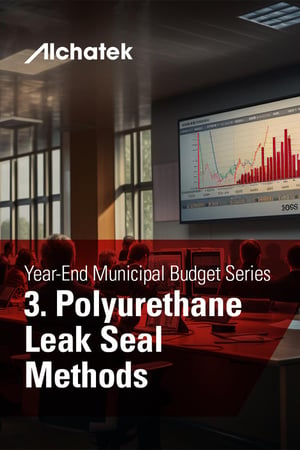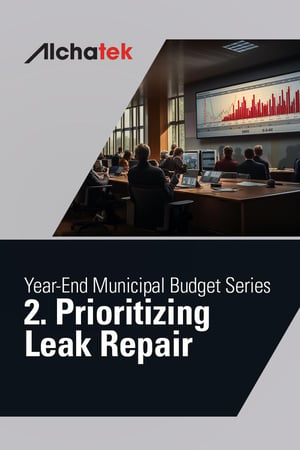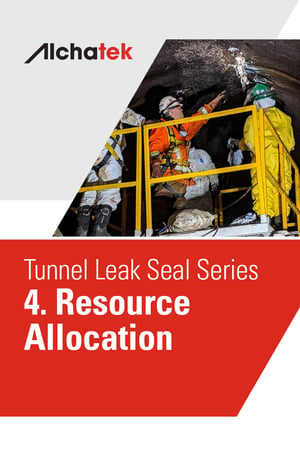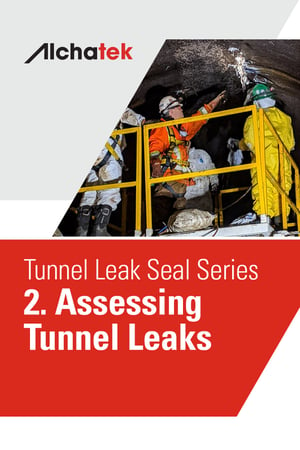
 Erosion in dams is a silent but potent threat that can compromise the structural integrity of these vital pieces of infrastructure. Over time, water leaks through cracks and joints in the concrete can lead to the gradual wearing away of material. This phenomenon is not just a maintenance issue; it poses a significant risk to the dam's overall stability and safety.
Erosion in dams is a silent but potent threat that can compromise the structural integrity of these vital pieces of infrastructure. Over time, water leaks through cracks and joints in the concrete can lead to the gradual wearing away of material. This phenomenon is not just a maintenance issue; it poses a significant risk to the dam's overall stability and safety.
How Erosion Undermines Structural Integrity
Erosion can have a cascading effect on a dam's structural integrity. As water seeps through cracks, it erodes the concrete and the soil behind it, enlarging the openings over time. This process can weaken the dam structure, making it susceptible to more severe forms of damage, such as cracking or even failure. Moreover, erosion can lead to other complications. For instance, it can result in sediment build-up, which may require costly dredging operations. It can also increase hydrostatic pressure behind the concrete walls, leading to further cracking and potential structural failure. Therefore, addressing erosion is not just about maintaining the dam but ensuring its long-term viability and safety.
The Role of Polyurethane Grout in Erosion Control
Polyurethane grout offers a robust solution to the problem of erosion in dams. This material not only seals the openings but also adheres strongly to the concrete, providing a long-lasting solution. One of the key advantages of polyurethane grout is its flexibility. Unlike cementitious grouts, which can be rigid and may crack under pressure, polyurethane grout maintains its elasticity. This property allows it to accommodate the natural movements of the dam structure, such as thermal expansion and contraction, without losing its sealing capabilities. Another benefit is the speed of application. Polyurethane grout cures quickly, often within minutes, allowing for rapid sealing of leaks. This quick cure time minimizes operational downtime, a critical factor for dams used in hydroelectric power generation or water supply. The material's versatility is another strong point. Polyurethane grout can be used in a variety of dam types, including concrete, earthen, and masonry dams. Its application is not limited by the size or shape of the crack, making it a go-to solution for a wide range of erosion-related issues.
Actionable Steps for Dam Owners and Operators
For dam owners and operators looking to address erosion, several actionable steps can guide the process.
- Conduct a Comprehensive Inspection: Before initiating any repair work, it's crucial to conduct a thorough inspection. This will help identify the areas most affected by erosion and the severity of the leaks.
- Consult with Engineers and Experts: Seek advice from engineers and expert contractors who specialize in dam maintenance and repair. Their expertise can guide you in selecting the most effective repair methods and materials, ensuring long-term durability and reliability.
- Choose High-Quality Material: While there are various materials available for sealing leaks, polyurethane grout is often recommended for its effectiveness and durability. Ensure that you select a high-quality product from a reputable manufacturer.
- Hire a Skilled Contractor: The success of the repair work largely depends on the contractor's expertise. Choose contractors with a proven track record in using polyurethane grout for dam repairs.
- Regular Monitoring and Scheduled Inspections: After the repair work is complete, it's essential to conduct regular monitoring and scheduled inspections. This helps in early detection of any new areas of concern, ensuring the effectiveness of the seal over time.
The Economic Benefits of Sealing Leaks with Polyurethane Grout
Addressing erosion with polyurethane grout is not just a matter of structural integrity; it's also an economically sound decision. The material's durability means fewer repairs are needed over the long term, reducing maintenance costs. Its quick cure time minimizes operational downtime, which is particularly beneficial for hydroelectric dams where every minute counts in terms of energy production. Moreover, the material is cost-effective. When considering the lifecycle costs, including maintenance and potential downtime, polyurethane grout often proves to be the most economical choice for combating erosion in dams.
Ensuring Long-Term Dam Safety
Erosion is a pervasive issue that can significantly compromise a dam's structural integrity if not addressed promptly and effectively. Polyurethane grout offers a robust, durable, and economically viable solution to this problem. By understanding the material's properties and benefits, and by taking actionable steps to hire a qualified waterproofing contractor, dam owners and operators can significantly enhance the longevity, safety, and efficiency of their infrastructure. This proactive approach to erosion control is not just about fixing a current problem; it's about safeguarding the future of the dam and the communities it serves.




 Alchatek specializes in cutting-edge solutions for infrastructure repair, including the use of polyurethane grouts for sealing leaks. In addition to manufacturing repair materials, we can refer you to contractors skilled in a wide range of applications, from crack injection to curtain wall grouting and more. We're passionate about helping municipalities and other organizations make the most of their budgets while ensuring the long-term integrity of their infrastructure.
Alchatek specializes in cutting-edge solutions for infrastructure repair, including the use of polyurethane grouts for sealing leaks. In addition to manufacturing repair materials, we can refer you to contractors skilled in a wide range of applications, from crack injection to curtain wall grouting and more. We're passionate about helping municipalities and other organizations make the most of their budgets while ensuring the long-term integrity of their infrastructure.
 Proactive budget planning is essential, especially as the fiscal year nears its end, for sustainable city growth. Advanced leak sealing demonstrates an impactful way to utilize end-of-year budgets. Strategic spending can yield long-term municipal benefits through enhanced infrastructure integrity. Forward-thinking budget optimization, aided by innovative repair and maintenance solutions, is key for sustainable, resilient growth.
Proactive budget planning is essential, especially as the fiscal year nears its end, for sustainable city growth. Advanced leak sealing demonstrates an impactful way to utilize end-of-year budgets. Strategic spending can yield long-term municipal benefits through enhanced infrastructure integrity. Forward-thinking budget optimization, aided by innovative repair and maintenance solutions, is key for sustainable, resilient growth.
 In the realm of infrastructure repair, innovation often defines the line between outdated methods and cutting-edge solutions. One such innovation that stands out is the use of polyurethane grouts for sealing leaks. The advantages of polyurethane leak seal are especially apparent in the context of crack injection and curtain wall grouting.
In the realm of infrastructure repair, innovation often defines the line between outdated methods and cutting-edge solutions. One such innovation that stands out is the use of polyurethane grouts for sealing leaks. The advantages of polyurethane leak seal are especially apparent in the context of crack injection and curtain wall grouting.
 In the realm of municipal budgeting, the approach of year-end spending often prompts considerations about where to direct the remaining funds. While the temptation might be to disperse these resources broadly across different areas, it's vital to stress the importance of prioritizing infrastructure projects, specifically those related to sealing leaks.
In the realm of municipal budgeting, the approach of year-end spending often prompts considerations about where to direct the remaining funds. While the temptation might be to disperse these resources broadly across different areas, it's vital to stress the importance of prioritizing infrastructure projects, specifically those related to sealing leaks.
 In the world of municipal finance, the phrase "use it or lose it" carries significant weight. This concept revolves around the annual budgeting process, where funds allocated to a municipality must be spent within a specific fiscal year, or they risk being forfeited.
In the world of municipal finance, the phrase "use it or lose it" carries significant weight. This concept revolves around the annual budgeting process, where funds allocated to a municipality must be spent within a specific fiscal year, or they risk being forfeited. 
 After identifying the presence of water leaks and exploring various sealing methods, the next aspect to consider is the financial implications. Managing tunnel leaks is both a technical challenge and a financial one. It’s critical to understand the direct and indirect costs associated with different sealing methods, along with strategies for effective resource allocation. This information is invaluable for civil engineers, tunnel maintenance teams, and infrastructure managers responsible for making budgetary decisions.
After identifying the presence of water leaks and exploring various sealing methods, the next aspect to consider is the financial implications. Managing tunnel leaks is both a technical challenge and a financial one. It’s critical to understand the direct and indirect costs associated with different sealing methods, along with strategies for effective resource allocation. This information is invaluable for civil engineers, tunnel maintenance teams, and infrastructure managers responsible for making budgetary decisions.
 After identifying tunnel leaks, the next step is exploring sealing methods. While crack/joint injection and curtain grouting are common solutions, they are not one-size-fits-all. By understanding the range of options and their pros and cons, engineers, maintenance teams, and infrastructure managers can make informed decisions tailored to each leak's unique circumstances.
After identifying tunnel leaks, the next step is exploring sealing methods. While crack/joint injection and curtain grouting are common solutions, they are not one-size-fits-all. By understanding the range of options and their pros and cons, engineers, maintenance teams, and infrastructure managers can make informed decisions tailored to each leak's unique circumstances. 
 The first step in addressing the issue of water leaks in tunnels is accurate diagnosis. Without a proper understanding of the problem's scope and severity, any intervention risks being ineffective or even counterproductive. By focusing on the common signs of water leaks in tunnels as well as the tools and techniques available for leak detection, civil engineers, tunnel maintenance teams, and infrastructure managers can make informed decisions about how to proceed. Armed with knowledge of the signs of leaks and detection methods, they can determine the size and location of leaks and decide on appropriate repair strategies. Careful diagnosis allows infrastructure caretakers to tackle water infiltration in a strategic, cost-effective manner.
The first step in addressing the issue of water leaks in tunnels is accurate diagnosis. Without a proper understanding of the problem's scope and severity, any intervention risks being ineffective or even counterproductive. By focusing on the common signs of water leaks in tunnels as well as the tools and techniques available for leak detection, civil engineers, tunnel maintenance teams, and infrastructure managers can make informed decisions about how to proceed. Armed with knowledge of the signs of leaks and detection methods, they can determine the size and location of leaks and decide on appropriate repair strategies. Careful diagnosis allows infrastructure caretakers to tackle water infiltration in a strategic, cost-effective manner.
 Water leaks in tunnels pose a significant challenge that demands immediate attention from civil engineers, tunnel maintenance teams, and infrastructure managers. Ignoring this issue can lead to severe consequences, affecting both the structural integrity of the tunnel and the safety of its users.
Water leaks in tunnels pose a significant challenge that demands immediate attention from civil engineers, tunnel maintenance teams, and infrastructure managers. Ignoring this issue can lead to severe consequences, affecting both the structural integrity of the tunnel and the safety of its users.